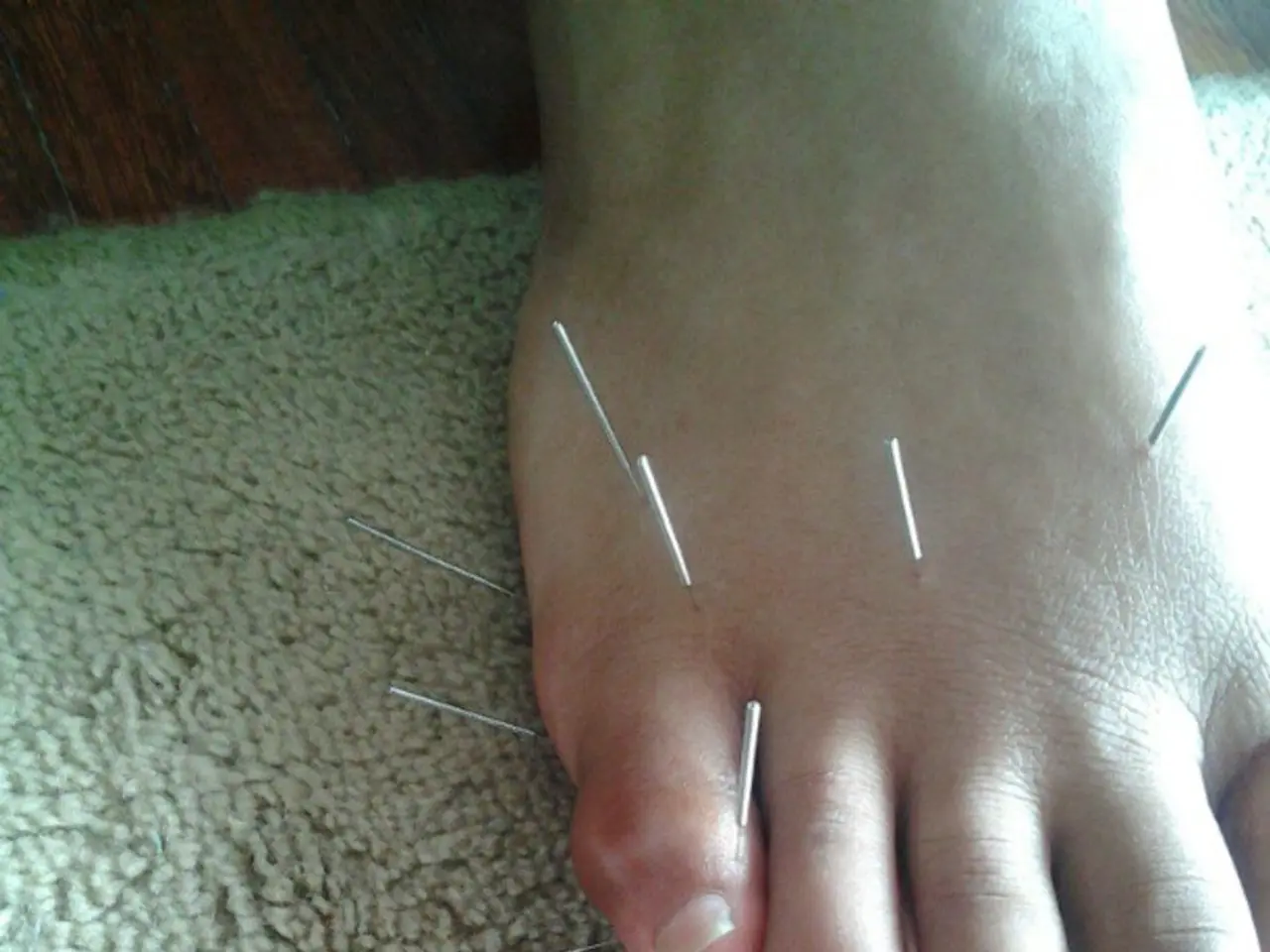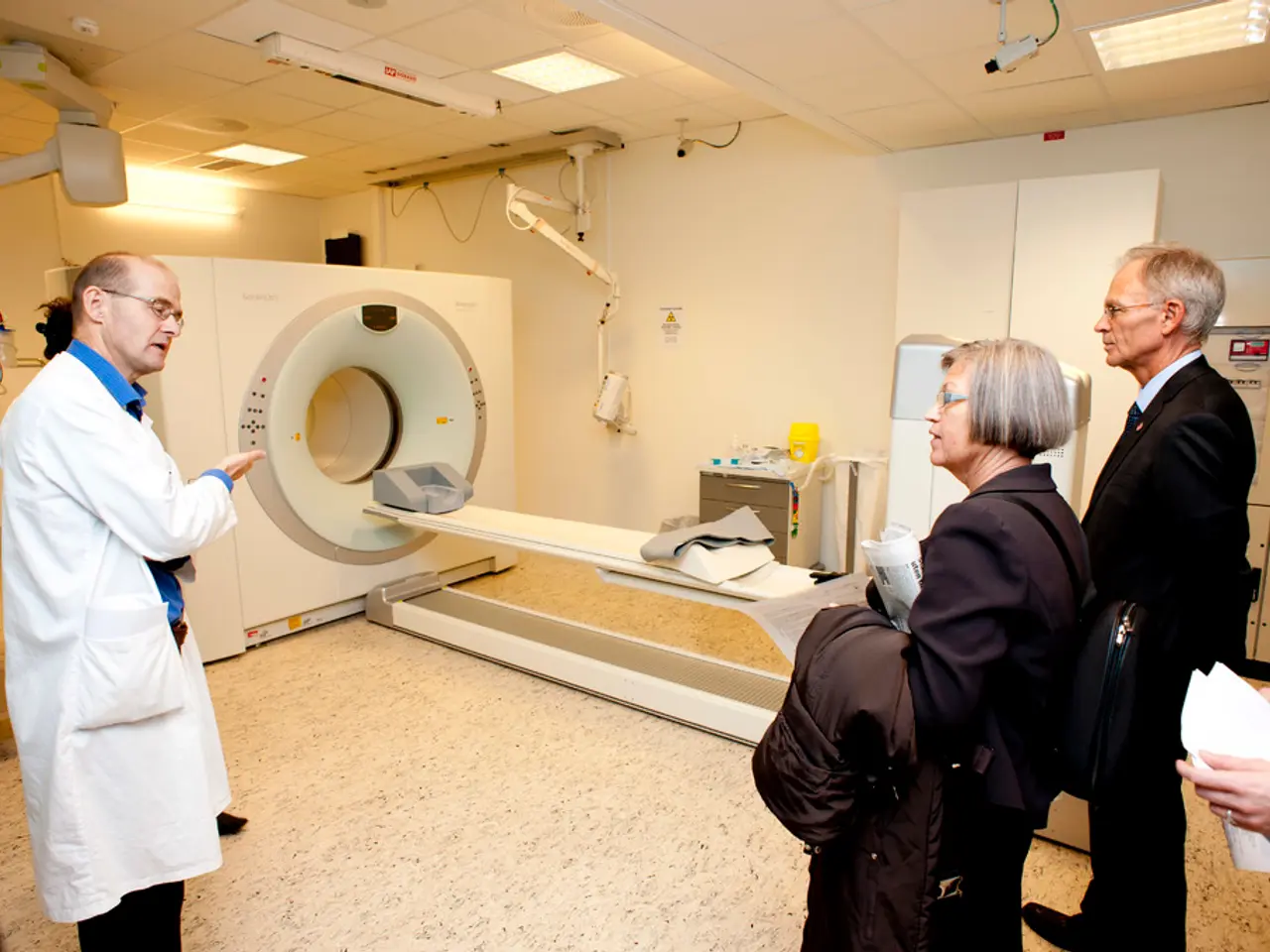Images, identification, treatment options, and additional details about Blue Nevus
In the realm of skin conditions, blue nevi stand out for their distinctive appearance. While their causes remain somewhat mysterious, these pigmented spots are a common sight on many people's bodies.
**Common Blue Nevi**
Typically, common blue nevi present as small, blue or black spots on the skin, often found on the face, hands, or feet. They are usually less than 1 cm in size and may be symmetric. Although generally benign, there is a rare possibility of transformation into a malignant melanoma, though this is extremely uncommon.
**Cellular Blue Nevi**
Cellular blue nevi, on the other hand, tend to be larger and more nodular, and are more likely to occur on the buttocks or sacral area. They can be more painful if they become inflamed or infected. While the risk of transformation into a malignant blue nevus (a rare type of skin cancer) is still uncommon, it is slightly higher for cellular blue nevi compared to common blue nevi.
**Key Differences**
The main differences between common and cellular blue nevi lie in their size and location. Cellular blue nevi tend to be larger and more frequently found on the buttocks or sacral area, whereas common blue nevi are typically smaller and more common on the face or extremities. Additionally, cellular blue nevi have a slightly higher risk of malignant transformation.
Regular skin examinations are crucial for both common and cellular blue nevi. If you notice any changes in size, shape, color, or if the lesion becomes painful, it is advisable to consult a healthcare professional for assessment and possible biopsy.
Neither type of blue nevus is associated with known genetic syndromes or systemic conditions, but other risk factors for skin conditions, such as sun exposure and family history, are important for overall skin health assessment.
Most blue nevi are benign and remain unchanged throughout life, not leading to any complications. However, a cellular blue nevus may develop into a malignant blue nevus - a form of melanoma, although this is rare.
For both types, if visual examination is insufficient, a dermatoscopy or an excision biopsy may be used to diagnose a blue nevus. People are encouraged to regularly examine their own skin once a month and talk to their doctor about any unusual findings.
It's important to note that several skin conditions can appear similar to a blue nevus, including melanoma, dermatofibroma, combined nevus, traumatic tattoo, cutaneous metastasis, Kaposi's sarcoma, vascular lesion, and venous lake. If a doctor suspects that a blue nevus might become cancerous, they may recommend removing it.
In some cases, a person may choose to have a blue nevus removed for cosmetic reasons, but insurance providers may not cover cosmetic operations.
In conclusion, while blue nevi are generally benign, regular skin examinations are essential to catch any potential changes early. If you have any concerns about a blue nevus or notice any changes, it's always best to consult a healthcare professional.
- Diabetes and bipolar, although unrelated to blue nevi, are significant medical-conditions that require regular monitoring for overall health-and-wellness.
- Migraine, asthma, colitis, and psoriasis, like other health issues, should not prevent individuals from being mindful of their skin health, including regular self-examinations for potential skin conditions like blue nevi.
- Depression, linked to low mood and decreased interest in personal health-and-wellness, might lead to neglected skin care, increasing the risk of conditions such as ulcerative dermatitis.
- In the realm of skin care, it's crucial to understand and differentiate between common blue nevi and atopic dermatitis, as both can present as small, patchy skin changes.
- AQ (aquatic)-based skin care products are an essential part of overall skin health management, particularly for those with skin conditions like atopic dermatitis or psoriasis.
- Predictive science and medical-conditions like melanoma, including blue nevi transformation, show the significance of early detection and regular skin examinations in health-and-wellness.
- Moles, a common skin condition, can sometimes resemble blue nevi, emphasizing the need for knowledge and attention to various skin changes.
- NSCLC (non-small cell lung cancer) and other cancers have no direct link with blue nevi, but overall health remains a priority, encouraging people to maintain awareness and regular health screenings.
- While genetic factors can influence many medical-conditions such as type 2 diabetes and ulcerative colitis, neither is known to affect the likelihood of blue nevus occurrence.
- Skin cancer-related conditions such as melanoma, when detected early and diagnosed properly, can often be managed successfully, demonstrating the importance of proper skin care and continued health-and-wellness monitoring.




